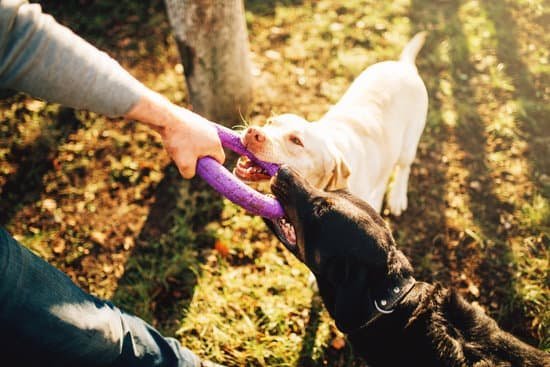As pet owners, one of the essential skills to teach our furry companions is how to walk on a leash. This is particularly crucial for older dogs, as they may have developed certain behaviors or habits that make leash training a bit more challenging. In this article, we will discuss the importance of leash training for older dogs and provide tips on how to effectively train your senior canine companion.
Leash training plays a vital role in ensuring the safety of both you and your older dog during walks. It allows you to have control over your pet’s movements, preventing any sudden darting or pulling that could potentially lead to accidents or injuries. Additionally, leash training can also strengthen the bond between you and your furry friend, providing opportunities for quality time spent together while engaging in physical activity.
Understanding the behavior of older dogs on a leash is key to successfully training them. Older dogs may have different needs and limitations compared to younger pups, so it’s important to approach leash training with patience and understanding. By selecting the right leash and collar that suit your senior dog’s size, breed, and comfort level, you can set them up for success in their leash-walking journeys.
Understanding the Behavior of Older Dogs on a Leash
Older dogs, just like puppies, require leash training to ensure their safety and the safety of those around them. However, it is essential to understand that older dogs may have different behavior patterns compared to younger dogs when it comes to leash training. Many older dogs may have ingrained habits or fears that need to be addressed carefully during the training process.
Physical Limitations
One important factor to consider when understanding the behavior of older dogs on a leash is their physical limitations. Older dogs may have arthritis, joint pain, or other age-related conditions that can make walking on a leash uncomfortable for them. It is crucial to take these physical limitations into account when starting leash training and adjust the intensity and duration of walks accordingly.
Past Experiences
Another aspect to consider is the past experiences that older dogs may have had with leashes. Some older dogs might have had negative experiences in the past, such as being restrained too tightly or associating the leash with punishment. Understanding your dog’s history with leashes can help you approach training in a way that creates positive associations and minimizes stress.
Behavioral Changes
As dogs age, they may also experience behavioral changes that affect their response to leash training. Older dogs might be more easily startled by loud noises or sudden movements, leading to leash-reactivity or fear-based behaviors. Patience and understanding are key when working with older dogs on leash training, as it may take more time and effort to help them feel comfortable and confident while on a walk.
Selecting the Right Leash and Collar for Your Older Dog
As you embark on the journey of leash training your older dog, selecting the right leash and collar is crucial to ensure both comfort and safety for your furry companion. With a wide array of options available in the market, it can be overwhelming to choose the most suitable ones for your older dog. Here are some tips to help you make the best decision:
- Consider the size and breed of your older dog: Larger breeds may require stronger and more durable leashes, while smaller dogs may benefit from lighter options.
- Choose a comfortable collar or harness: For older dogs with neck issues or tracheal problems, harnesses might be a better alternative to traditional collars. Look for padded options that reduce strain on your dog’s neck.
Understanding your older dog’s unique needs and preferences will guide you in selecting the right equipment for leash training. Next, let’s delve into some key factors when choosing a leash and collar for your beloved senior pet:
- Reflective qualities: Opt for leashes with reflective stripes or materials if you walk your older dog during low light conditions to enhance visibility and safety.
- Length and material: Consider whether you need a longer or shorter leash based on how much freedom of movement you want to give your older dog. Additionally, choose a material that is sturdy yet comfortable for both you and your pet.
By taking these aspects into account, you can ensure that the leash and collar you select will facilitate successful training sessions as well as enjoyable walks with your beloved older dog. Remember, finding the right gear tailored to your senior dog’s specific requirements is essential in ensuring they feel comfortable and secure during their training sessions.
Step-by-Step Guide on Teaching Your Older Dog to Walk on a Leash
Start Slowly
When it comes to leash training an older dog, patience is key. Begin by allowing your dog to get used to wearing the collar and leash indoors where they feel comfortable and safe. Let them explore the feeling of having the leash attached without any tension. This will help prevent them from associating the leash with negative experiences.
Positive Reinforcement
During leash training, it’s important to use positive reinforcement techniques such as treats, praise, and rewards to encourage good behavior. Whenever your older dog walks nicely on the leash without pulling or tugging, reward them with a treat or verbal praise. This will help them understand that walking calmly on a leash leads to positive outcomes.
Practice Consistently
Consistency is key when teaching an older dog how to walk on a leash. Aim for short but frequent training sessions rather than long and sporadic ones. By practicing consistently, your dog will start to understand what is expected of them while on a leash. Be patient and remember that every dog learns at their own pace.
By following these steps and being consistent in your approach, you can effectively train your older dog on how to walk properly on a leash. Remember that every dog is different, so be patient and understanding throughout the training process. With time and effort, you’ll soon enjoy leisurely walks with your well-behaved older canine companion.
Common Challenges During Leash Training and How to Overcome Them
Older dogs may present unique challenges when it comes to leash training, often due to ingrained behaviors or physical limitations. One common challenge is pulling on the leash, which can make walks frustrating and difficult for both the dog and the owner.
To address this issue, it’s essential to start with a proper fitting collar or harness that provides control without causing discomfort. Using positive reinforcement techniques, such as treats and verbal praise when your older dog walks calmly beside you, can also help reinforce desired behavior.
Another challenge during leash training with older dogs is fear or anxiety, which may manifest in reluctance to walk or excessive pulling in certain situations. It’s important to approach these situations with patience and understanding. Gradual exposure to new environments or stimuli can help build your dog’s confidence over time. Additionally, providing a safe space for your older dog to retreat to if they feel overwhelmed can be beneficial during the training process.
Incorporating leash training into daily routines is key to overcoming common challenges with older dogs. Consistency and repetition are essential elements of successful training. By setting aside dedicated time each day for short leash training sessions, you can gradually build up your dog’s confidence and obedience. Remember to keep training sessions positive and rewarding, focusing on small achievements rather than expecting immediate perfection from your older furry companion.
| Challenges | Strategies |
|---|---|
| Pulling on the leash | Proper fitting collar/harness; Positive reinforcement techniques |
| Fear or anxiety | Gradual exposure; Safe space for retreat |
| Incorporating Training into Daily Routine | Consistency; Short dedicated sessions; Focus on positive reinforcement |
Tips for Reinforcing Positive Behavior While on a Leash
When it comes to leash training an older dog, positive reinforcement plays a key role in shaping their behavior. Older dogs may have developed certain habits over the years, making it crucial to use positive reinforcement techniques effectively.
One of the most important things to remember is to reward your older dog with treats, praise, or petting when they exhibit desired behaviors while on a leash. This will help them associate good behavior with positive outcomes and increase the likelihood of them repeating that behavior in the future.
Consistency is another vital aspect of reinforcing positive behavior while leash training an older dog. Make sure to establish clear rules and boundaries during walks and consistently reward your furry friend for following them. Additionally, be patient and understanding with your older dog as they may take longer to learn new behaviors compared to younger pups. Remember that each dog is unique, and it may take time for your older companion to adjust to leash training.
| Tip | Description |
|---|---|
| Use high-value treats | Reward your older dog with special treats they love when they walk nicely on a leash. |
| Give immediate rewards | Offer treats or praise right after your dog displays the desired behavior while walking on a leash. |
| Stay consistent | Maintain consistency in rewarding positive behaviors during every walk to reinforce good habits. |
Incorporating Leash Training Into Daily Routines for Older Dogs
Leash training is an essential skill for older dogs to ensure their safety and the safety of those around them. By incorporating leash training into your older dog’s daily routine, you can help them maintain good behavior and establish a strong bond with you as their owner. Here are some tips on how to seamlessly integrate leash training into your senior furry friend’s daily activities:
1. Start with short walks: Begin by taking your older dog on short walks around your neighborhood or in a familiar area. This will help them get used to being on a leash again and adjust to the new routine. Gradually increase the distance and duration of the walks as your older dog becomes more comfortable.
2. Use positive reinforcement: Reward your older dog with treats or praise when they walk calmly on the leash without pulling or lunging. Positive reinforcement helps reinforce good behavior and encourages your senior dog to continue walking nicely on the leash. Avoid using punishment or harsh corrections, as this can cause stress and anxiety for older dogs.
3. Establish a consistent schedule: Older dogs thrive on routine, so try to incorporate leash training into their daily schedule at the same time each day. Consistency is key when it comes to training older dogs, so stick to a regular walking routine to help them understand what is expected of them during walks.
By following these tips and incorporating leash training into your older dog’s daily routines, you can help them stay safe, happy, and well-behaved while enjoying their daily walks with you. Remember to be patient and understanding with your senior furry friend as they learn how to walk on a leash again, and always provide plenty of love and encouragement throughout the training process.
Advantages of Leash Training for Older Dogs
Leash training is not only important for young dogs but also for older dogs. It can significantly improve their safety and strengthen the bond between you and your furry companion. By following the right techniques and being patient, you can successfully train your older dog to walk on a leash.
One of the key aspects of leash training for older dogs is understanding their behavior and any potential challenges they may face. Older dogs may have certain physical limitations or past experiences that influence their behavior on a leash. By being attentive to their needs and providing positive reinforcement, you can help them overcome any anxieties or difficulties they may have while learning how to walk on a leash.
When selecting the right leash and collar for your older dog, it’s essential to consider their size, strength, and comfort. A comfortable harness or collar that fits well will make the training process more enjoyable for both you and your pet.
Additionally, incorporating leash training into your daily routines can help reinforce positive behavior and create a stronger bond with your older dog. Remember to be patient, consistent, and loving throughout the training process – soon enough, you’ll be enjoying stress-free walks with your well-trained older dog by your side.
Frequently Asked Questions
Is It Too Late to Train an Older Dog?
It is never too late to train an older dog! Older dogs can still learn new tricks and behaviors with patience, consistency, and positive reinforcement. While it may take longer compared to training a puppy, older dogs are still capable of learning.
How Do You Train an Older Dog That Has Never Been Trained?
Training an older dog that has never been trained requires understanding the dog’s behavior and needs. Start with basic commands like “sit” and “stay” using rewards like treats or praise. Consistency is key in training an older dog, along with patience and understanding their limitations.
Can You Train a 10 Year Old Dog?
Yes, you can train a 10-year-old dog! While it may require more time and patience compared to younger dogs, older dogs are still able to learn new commands and behaviors. It’s important to tailor the training approach to the individual dog’s needs and abilities.

Welcome to the blog! I am a professional dog trainer and have been working with dogs for many years. In this blog, I will be discussing various topics related to dog training, including tips, tricks, and advice. I hope you find this information helpful and informative. Thanks for reading!





